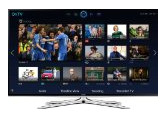
What different types of TV are available?
LCD TV - CCFL
LCD TVs use Cold Cathode Flourescent Lamps, this technology has been superseded by LED, so they are cheaper than their LED counterparts, but not as good.
LED TV - Direct LED
Direct LED sets use an array of backlit LEDs directly behind the screen which enables localised dimming of contrasty areas, effectively meaning that highlights and shadows are rendered more efficiently, producing a punchier picture, they are energy efficient and produce a wider colour range (gamut) than CCFL. They are more expensive to produce than Edge LED.
LED TV - Edge LED
Edge LED sets have the backlight LEDs mounted around the edge of the screen, this allows them to be super slender in profile, they offer a superior picture than LCD TV (CCFL) but not as good as direct LED. They are cheaper to produce and as a result more prevalent.
OLED TV
OLED TV’s are top shelf technology with prices to match, big screen versions only went on sale in 2014 due to manufacturing challenges. They produce a far superior picture to anything else currently available and can be very thin and flexible. It is not yet determined whether they will continue to be mass produced as manufacturers are having difficluty commercialising the technology due to cost.
Plasma TV - PDP
These old sets use legacy technology, they are heavy, run hot and consume more power, you can still get hold of them at bargain prices.
Curved TVs (these could be LED or LCD technology)
Some manufacturers now produce curved TVs, not curved outwards like we had in the old days but concave which produces a better viewing experience for those sat directly in front of it. Above a 40 degree viewing angle either side and the benefits become downsides due to foreshortening of the image.
What resolution do I want?
HD (High Definition)
HD Ready TV’s are required to display a minimum of 720 pixels vertically, full HD means 1080 pixels vertically. If you are buying a TV for primary viewing I would recommend 1080 (Full HD). For a secondary set 720 (HD) is perfectly adequate but will obviously render a lower resolution image.
Ultra HD (4k)
These sets can display images of 2160 pixels vertically, twice the height of full HD and therefore 4 times the resolution (3840 x 2160) pixels, this is the same resolution as 4 Full HD tv’s!
What size do I want?
32 inch TVs
A great choice for a secondary set or one in a smaller room, a bedroom for example. Loads to choose from at this size.
Panasonic TX-32AS500B 32-inch HD Ready Smart LED TV with Built-In Wi-Fi and Freeview (New for 2014)
Sony KDL32W706BSU 32-inch Widescreen Full HD 1080p Smart TV with Freeview - Silver
LG 32LW450U 32-inch Widescreen Cinema Full HD 1080p 3D 100Hz LED TV with Freeview
40 & 42 inch TVs
Samsung UN40H5500 40-Inch 1080p 60Hz Smart LED TV
Samsung UE40H6240 40-inch 1080p Full HD Smart 3D Wi-Fi LED TV with Freeview HD
LG 42UB820V TV Ecran LCD 42 " (107 cm) 1080 pixels Oui (Mpeg4 HD)
Plasma screen still have a foot in the door of this market and if you don't mind the chunkier profile there are some bargains to be had. Equally LCD and LED tv's in this size range are probably the best value as more serious TV viewers head up to 50 inches and beyond!
46 & 47 inch TVs
Previously dominated by Plasma this is the size where it gets cinematic! LCD and LED technology abound in this size.
LG 47LB650V 47-inch Widescreen 1080p Full HD Wi-Fi Smart 3D TV with Freeview HD
Sony 47-inch Widescreen Bravia Professional Full HD 1080p LED Backlight TV with Freeview HD
LG 47LB580V 47 -inch LCD 1080 pixels 50 Hz TV
TV LED 47" Panasonic TX-47ASW654 - Full HD - 3D - Smart TV - Metal brossé noir
50 inch plus TVs
At this size 3d becomes an immersive experience especially as it is being overrun by 4k models, dig deep though, you might have to forego the new car for one of these beauties!
Samsung Series 6 H6400 75-inch Widescreen Full HD 1080p 3D Smart LED TV with Freeview HD
Samsung UE60H6240 60-inch 1080p Full HD 3D Wi-Fi LED TV with Freeview HD
Samsung UE55H6240 55-inch 1080p Full HD 3D Wi-Fi LED TV with Freeview HD
Cello C58227DVBT2 58-inch Widescreen Full HD 1080p LED TV with Freeview
Smart TV - what's that for?
Smart TVs are those that can connect to the internet via a cable or your wi-fi connection, whilst not necessary for the more traditional uses of the TV, smart TVs add functionality with the ability to connect to Video-on-Demand services such as BBC iPlayer, Netflix, Hulu & Lovefilm to name but a few. You can even use video conferencing apps like Skype and social media websites like Facebook and Twitter to keep in touch with your family and friends without you having to huddle around a PC. These TV's function in many ways like a smartphone by using apps to do what you want them to. If you don't need these features or would prefer to try them out before you commit to buying a new TV, you can connect a set top box to a screen you might already have.
Google Chromecast Dongle
A Google Chromecast Dongle will allow you to push content from your smartphone to your telly! Anything you can do on your phone or tablet, you can now do on your TV.